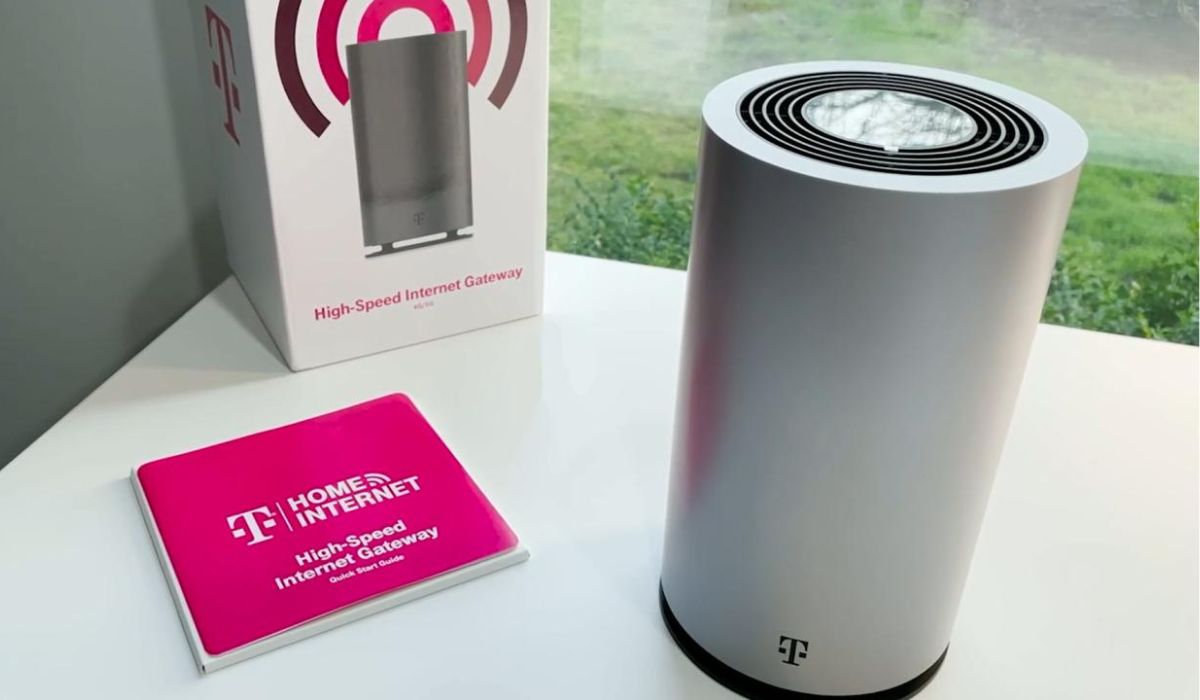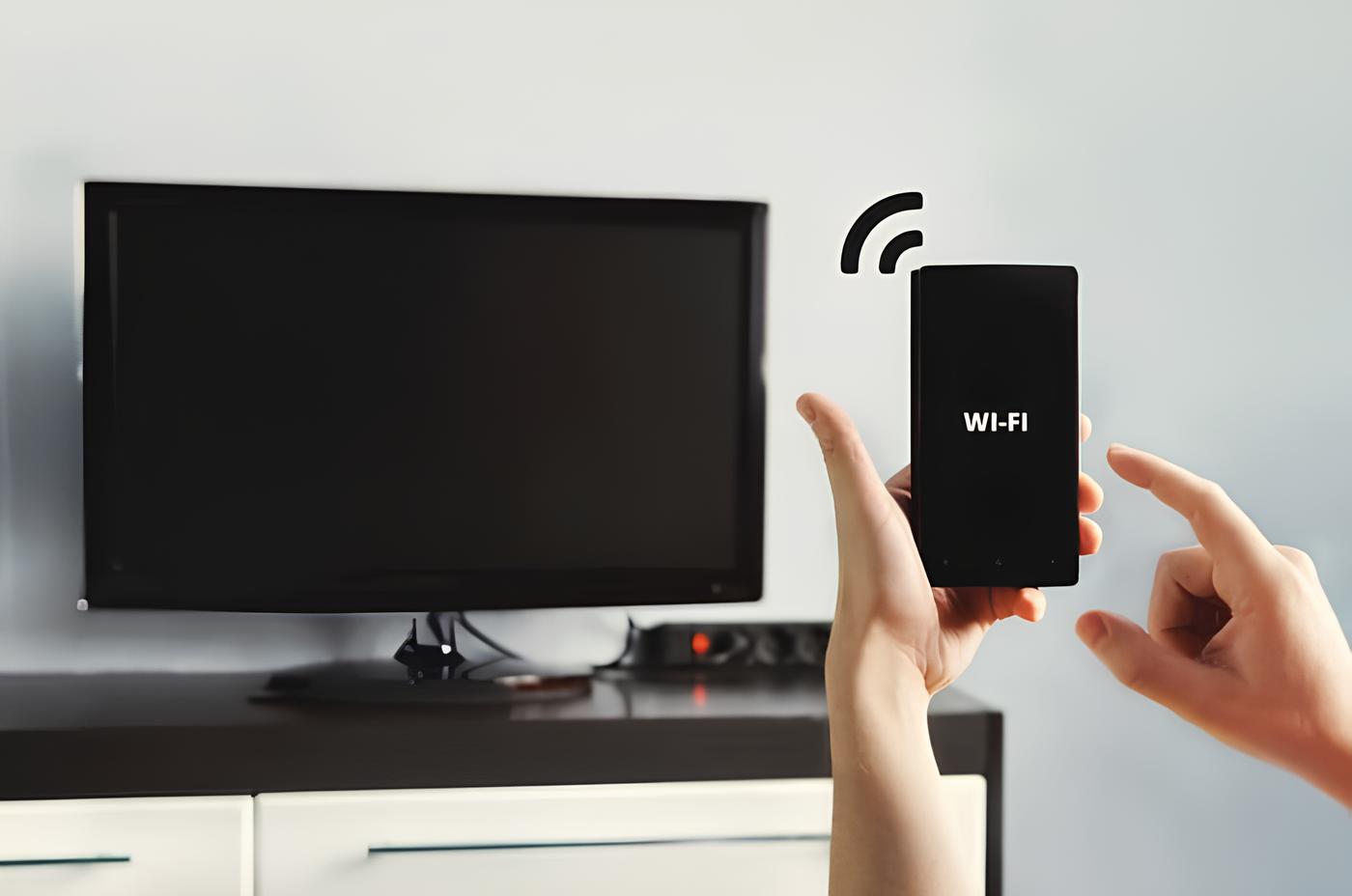Introduction
In today's fast-paced and interconnected world, a reliable Wi-Fi connection is no longer just a luxury—it's a necessity. Whether you're working from home, streaming your favorite shows, or staying connected with friends and family, having a strong and stable Wi-Fi signal is essential for a seamless online experience. However, there are times when your existing Wi-Fi network may not provide the coverage you need, especially in larger homes or buildings with thick walls that hinder the signal.
Fortunately, there's a solution that can help you extend your Wi-Fi range and ensure a consistent connection throughout your space: using a mobile hotspot. A mobile hotspot, also known as a portable Wi-Fi device, allows you to create a wireless internet connection using cellular data, effectively serving as a personal Wi-Fi network that you can carry with you wherever you go.
In this comprehensive guide, we'll walk you through the step-by-step process of extending your Wi-Fi range with a mobile hotspot. Whether you're struggling with dead zones in your home or looking to stay connected while on the go, leveraging a mobile hotspot can be a game-changer for improving your connectivity.
By the end of this guide, you'll have a clear understanding of how to select the right mobile hotspot device, set it up, connect your devices to the hotspot, and effectively extend your Wi-Fi range. Additionally, we'll provide troubleshooting tips to address common issues and ensure that you get the most out of your mobile hotspot experience.
So, if you're ready to take control of your Wi-Fi coverage and enjoy a seamless online experience, let's dive into the step-by-step process of extending your Wi-Fi range with a mobile hotspot.
Step 1: Choosing a Mobile Hotspot Device
Selecting the right mobile hotspot device is the first crucial step in extending your Wi-Fi range. With a wide array of options available in the market, it's important to consider several factors to ensure that you choose a device that meets your specific needs and provides reliable connectivity.
Consider Your Usage Needs
Before diving into the selection process, it's essential to assess your usage needs. Are you primarily planning to use the mobile hotspot at home, or do you need it for on-the-go connectivity? Understanding your usage patterns will help you determine the type of mobile hotspot that best suits your requirements. For home use, a stationary hotspot with long battery life and robust Wi-Fi range may be ideal. On the other hand, if you need a portable solution for travel or outdoor activities, a compact and lightweight hotspot designed for mobility would be more suitable.
Network Compatibility
When choosing a mobile hotspot device, it's crucial to consider network compatibility. Ensure that the device supports the cellular network providers available in your area. Different carriers operate on various frequencies and technologies, so verifying compatibility with your preferred network is essential to guarantee seamless connectivity.
Battery Life and Charging Options
The battery life of a mobile hotspot is a critical factor, especially if you intend to use it for extended periods without access to a power source. Look for a device with long-lasting battery performance to avoid frequent recharging. Additionally, consider the charging options available for the hotspot. Some devices support fast charging or have versatile power input options, such as USB-C, which can be convenient for recharging on the go.
Wi-Fi Range and Performance
Evaluate the Wi-Fi range and performance capabilities of the mobile hotspot. Look for devices that offer strong signal coverage and support high-speed connectivity, especially if you plan to use multiple devices simultaneously or require seamless streaming and online gaming experiences. Additionally, features such as dual-band Wi-Fi support and external antenna ports can enhance the overall performance and range of the hotspot.
Device Features and Security
Review the additional features offered by different mobile hotspot devices, such as touchscreen interfaces, customizable security settings, and integrated VPN support for enhanced privacy. Prioritize security features to safeguard your connection and ensure that the device offers robust encryption protocols and password protection options to prevent unauthorized access.
By carefully considering these factors and conducting thorough research on available options, you can make an informed decision when selecting a mobile hotspot device that aligns with your usage needs and provides reliable Wi-Fi extension capabilities. With the right device in hand, you'll be well-prepared to proceed to the next steps of setting up and leveraging your mobile hotspot to extend your Wi-Fi range effectively.
Step 2: Setting Up the Mobile Hotspot
Setting up your mobile hotspot is a straightforward process that involves configuring the device and establishing a secure and reliable Wi-Fi network. Whether you've opted for a dedicated mobile hotspot device or plan to use your smartphone's tethering feature, the initial setup is essential to ensure seamless connectivity for your devices.
Device Activation and Configuration
If you've purchased a standalone mobile hotspot device, the first step is to activate and configure it according to the manufacturer's instructions. This typically involves inserting a compatible SIM card, powering on the device, and accessing the device settings to configure the Wi-Fi network name (SSID) and password. Additionally, you may need to adjust other settings, such as network band selection and security protocols, based on your preferences and network requirements.
For those utilizing a smartphone as a mobile hotspot, the setup process involves enabling the hotspot/tethering feature in the device settings. This typically requires navigating to the network or hotspot settings on your smartphone and activating the Wi-Fi hotspot functionality. You can customize the network name and password to create a personalized Wi-Fi network for your devices to connect to.
Network Customization and Security
Once the initial setup is complete, it's essential to customize the network settings and prioritize security measures to safeguard your connection. If your mobile hotspot device offers advanced customization options, consider optimizing the Wi-Fi channel selection and network mode settings to maximize signal strength and minimize interference from neighboring networks.
Moreover, prioritize security by enabling WPA2 or WPA3 encryption and setting a strong, unique password for your Wi-Fi network. Implementing robust security measures is crucial to prevent unauthorized access and ensure the privacy of your data while using the mobile hotspot.
Testing and Verification
After configuring the network settings and security parameters, it's advisable to conduct testing to verify the functionality of the mobile hotspot. Connect your devices, such as laptops, tablets, or smart home gadgets, to the Wi-Fi network and assess the connectivity and performance. Ensure that devices can seamlessly connect to the hotspot and access the internet without any issues.
Additionally, verify the signal strength and range of the Wi-Fi network to identify potential dead zones or areas with weak coverage. This initial testing phase allows you to fine-tune the placement of the mobile hotspot device for optimal signal distribution and coverage throughout your space.
By following these steps and customizing the network settings to align with your preferences and security requirements, you can successfully set up your mobile hotspot and create a reliable Wi-Fi extension that addresses your connectivity needs. With the mobile hotspot operational, you're now ready to proceed to the next phase of connecting your devices and leveraging the extended Wi-Fi range for seamless online experiences.
Step 3: Connecting Devices to the Hotspot
Once your mobile hotspot is up and running, the next step is to connect your devices to the newly created Wi-Fi network. Whether you're using a laptop, tablet, smartphone, or smart home devices, the process of connecting to the hotspot is simple and can be completed in a few easy steps.
-
Locate the Wi-Fi Network: Begin by accessing the Wi-Fi settings on your device. You should see the network name (SSID) of your mobile hotspot listed among the available Wi-Fi networks. The network name is typically the name you assigned during the setup process.
-
Enter the Password: Select the Wi-Fi network associated with your mobile hotspot and enter the password when prompted. The password, which you set during the initial configuration of the hotspot, ensures secure access to the network.
-
Establish Connection: After entering the correct password, your device will attempt to establish a connection to the mobile hotspot. Once connected, you'll see the Wi-Fi symbol or indicator on your device's screen, confirming that you are now linked to the hotspot.
-
Verify Connectivity: To ensure that the connection is successful, open a web browser or any internet-dependent application on your device. If the connection is working correctly, you should be able to browse the web, stream content, or access online services without any issues.
-
Connect Multiple Devices: One of the key advantages of using a mobile hotspot is the ability to connect multiple devices simultaneously. Whether you have a laptop, tablet, smartphone, or IoT devices, you can connect them all to the hotspot, allowing seamless access to the internet across your entire device ecosystem.
-
Optimize Settings for Each Device: Depending on the capabilities of your mobile hotspot, you may have the option to customize settings for individual connected devices. This could include prioritizing bandwidth for specific devices, enabling guest network access, or implementing parental controls to manage internet usage for children's devices.
By following these steps, you can effortlessly connect your devices to the mobile hotspot and leverage the extended Wi-Fi range for uninterrupted connectivity. Whether you're working, streaming, or simply staying connected, the ability to connect multiple devices to the hotspot ensures that you can enjoy a seamless online experience across all your digital devices.
Step 4: Extending Wi-Fi Range with the Hotspot
With your mobile hotspot set up and devices connected, you're now ready to extend your Wi-Fi range effectively. The mobility and flexibility offered by a mobile hotspot allow you to address Wi-Fi dead zones or expand coverage to areas where your primary Wi-Fi network may struggle to reach. Here's how you can maximize the potential of your mobile hotspot to extend Wi-Fi coverage:
Assess Signal Strength and Placement
Begin by assessing the signal strength of your mobile hotspot in different areas of your space. Use your connected devices to determine areas with weaker Wi-Fi coverage or potential dead zones. By identifying these areas, you can strategically position the mobile hotspot to optimize signal distribution and ensure comprehensive coverage. Consider placing the hotspot in a central location to maximize its reach and minimize signal interference.
Utilize External Antennas or Signal Boosters
Some mobile hotspot devices offer the option to connect external antennas or signal boosters to enhance signal strength and range. If your device supports this feature, consider investing in high-gain antennas or signal amplifiers to further extend the Wi-Fi coverage. Positioning external antennas in optimal locations and adjusting signal booster settings can significantly improve the overall performance and reach of your mobile hotspot network.
Implement Mesh Networking Solutions
In scenarios where you require extensive Wi-Fi coverage across a large area or multiple floors, consider integrating your mobile hotspot into a mesh networking setup. Mesh networking systems allow you to create a unified Wi-Fi network using multiple access points, including your mobile hotspot, to ensure seamless connectivity throughout your entire space. By strategically placing additional access points and leveraging the capabilities of mesh networking technology, you can achieve a cohesive and extended Wi-Fi network that eliminates dead zones and ensures consistent connectivity.
Optimize Network Settings for Range
Explore the advanced network settings available on your mobile hotspot device to optimize Wi-Fi range and performance. Features such as adjusting transmission power, selecting optimal Wi-Fi channels, and enabling extended range modes can help fine-tune the signal propagation and maximize coverage. Additionally, if your device supports dual-band Wi-Fi, consider utilizing both the 2.4GHz and 5GHz bands to cater to different devices and further extend the Wi-Fi range.
By implementing these strategies and leveraging the capabilities of your mobile hotspot, you can effectively extend your Wi-Fi range and overcome coverage limitations. Whether you're addressing dead zones in your home, enhancing connectivity in a remote location, or creating a reliable network for outdoor activities, the versatility of a mobile hotspot empowers you to extend Wi-Fi coverage and enjoy seamless connectivity across various environments.
Step 5: Troubleshooting and Tips
After setting up and extending your Wi-Fi range with a mobile hotspot, it's essential to be prepared to address potential issues and optimize the performance of your extended network. Here are some troubleshooting tips and valuable insights to ensure that your mobile hotspot continues to deliver reliable connectivity:
Signal Interference and Network Congestion
- Identify Interference Sources: Keep an eye out for potential sources of signal interference, such as electronic appliances, neighboring Wi-Fi networks, or physical obstructions. Position the mobile hotspot away from such interference sources to minimize signal disruption and enhance network stability.
- Manage Network Congestion: In scenarios where multiple devices are connected to the mobile hotspot, prioritize bandwidth allocation for essential tasks or devices requiring high-speed connectivity. This can help mitigate network congestion and ensure a smoother online experience for all connected devices.
Battery Management and Power Options
- Optimize Battery Performance: If your mobile hotspot is battery-powered, consider implementing power-saving measures to extend its operational duration. This may include adjusting the device's sleep settings, utilizing power-saving modes, and carrying a portable charger for on-the-go recharging.
- Explore Power Input Options: For stationary use, explore the availability of alternative power input options, such as DC adapters or power over Ethernet (PoE) support, to ensure continuous and reliable power supply to the mobile hotspot device.
Security and Privacy Measures
- Regularly Update Passwords: Periodically update the Wi-Fi network password to enhance security and prevent unauthorized access. Implementing a strong, unique password and changing it at regular intervals can bolster the security of your extended Wi-Fi network.
- Enable VPN for Enhanced Privacy: If your mobile hotspot device supports VPN integration, consider enabling a virtual private network (VPN) to secure your internet traffic and protect sensitive data, especially when accessing public Wi-Fi networks or unfamiliar environments.
Firmware Updates and Device Maintenance
- Stay Updated with Firmware Releases: Keep your mobile hotspot's firmware up to date by regularly checking for and installing firmware updates released by the device manufacturer. Firmware updates often include performance enhancements, security patches, and feature improvements that can optimize the functionality of the mobile hotspot.
- Perform Routine Maintenance: Periodically inspect the physical condition of the mobile hotspot, clean external antenna ports (if applicable), and ensure proper ventilation to prevent overheating. Routine maintenance can prolong the lifespan of the device and maintain optimal performance.
Coverage Testing and Network Optimization
- Conduct Periodic Coverage Tests: Periodically assess the Wi-Fi coverage and signal strength across different areas of your space to identify potential coverage gaps or areas with weakened connectivity. Adjust the placement of the mobile hotspot or consider additional networking solutions to address coverage limitations effectively.
- Explore Advanced Network Settings: Delve into the advanced network settings of your mobile hotspot to explore features such as beamforming, band steering, or quality of service (QoS) settings that can fine-tune the network performance and optimize the extended Wi-Fi coverage.
By proactively addressing potential challenges and implementing these tips, you can maintain a robust and reliable Wi-Fi extension powered by your mobile hotspot. These troubleshooting insights and optimization guidelines will help you overcome common issues and ensure that your extended Wi-Fi network continues to deliver seamless connectivity for your diverse digital needs.
Conclusion
In conclusion, leveraging a mobile hotspot to extend your Wi-Fi range offers a versatile and effective solution for addressing connectivity challenges in various environments. By carefully selecting the right mobile hotspot device, customizing network settings, and strategically positioning the hotspot, you can overcome Wi-Fi dead zones, expand coverage, and ensure seamless connectivity for your devices.
The process begins with choosing a mobile hotspot device that aligns with your specific usage needs, network compatibility, and performance expectations. Whether you prioritize long battery life for home use or require a compact, portable solution for on-the-go connectivity, selecting a device that meets your requirements is paramount to the success of extending your Wi-Fi range.
Once the mobile hotspot is set up, connecting your devices to the network becomes a seamless process, allowing you to enjoy uninterrupted internet access across multiple devices. The ability to optimize network settings, implement security measures, and customize connectivity options for individual devices further enhances the overall experience of extending your Wi-Fi range with a mobile hotspot.
Moreover, the potential for extending Wi-Fi coverage goes beyond basic setup, as advanced strategies such as utilizing external antennas, integrating mesh networking solutions, and optimizing network settings can significantly enhance the reach and performance of your extended network. These approaches empower you to tailor the Wi-Fi coverage to suit your specific environment, whether it's a large home, outdoor space, or remote location.
Furthermore, the troubleshooting tips and optimization guidelines provided ensure that you can proactively address potential challenges and maintain the reliability and security of your extended Wi-Fi network. By staying informed about signal interference, power management, security measures, firmware updates, and network optimization, you can maximize the potential of your mobile hotspot and enjoy consistent connectivity across diverse scenarios.
In essence, extending your Wi-Fi range with a mobile hotspot not only addresses coverage limitations but also provides the flexibility to stay connected wherever you go. Whether you're working, streaming entertainment, or engaging in outdoor activities, the ability to create a reliable and personalized Wi-Fi network ensures that you can enjoy a seamless online experience tailored to your unique connectivity needs.
























